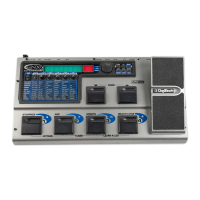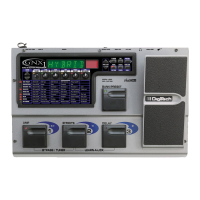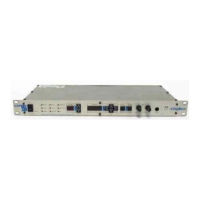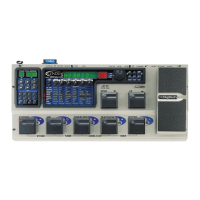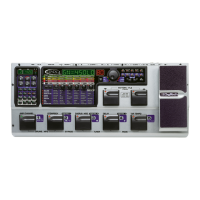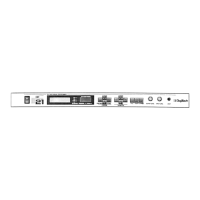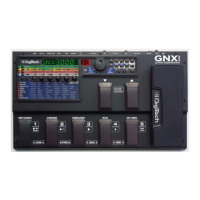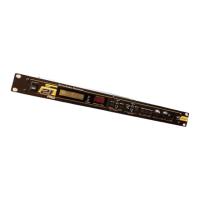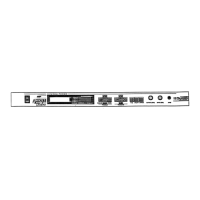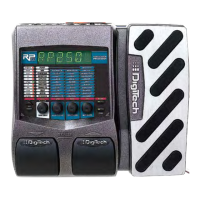Do you have a question about the DigiTech Genesis 3 and is the answer not in the manual?
| True Bypass | No |
|---|---|
| Type | Multi-effects pedal |
| Technology | Digital |
| Effects | Distortion, delay, reverb |
| Inputs | 1 x 1/4" Instrument |
Covers general electrical hazards, warnings about opening the unit, and mains plug safety.
Details earthing, power source, cord protection, and servicing safety guidelines.
Outlines operating conditions related to interference and shielding.
States conformity to safety and EMC directives, listing specifications.
Provides manufacturer details and European service contact information.
Outlines warranty coverage, registration, liabilities, and conditions for forfeiture.
Notes potential inaccuracies and changes in the manual's content.
Welcomes the user, lists package contents, and highlights key features.
Highlights core technologies like GeNetX, Hypermodel creation, and studio-quality effects.
Guides on making connections, applying power, and selecting output modes.
Explains selecting presets, amp/cabinet models, and initial sound adjustments.
Introduces the front panel layout and explains controls like Amp Model, Tap-It, Edit, and Effect LEDs.
Details the function of effect parameter knobs for performance and editing.
Explains the alpha-numeric/numeric displays and the Data/Preset knob's functions.
Covers Amp Save, Store, Cabinet Select, Warp, and detailed Amp Parameter adjustments.
Details all rear panel jacks for audio, MIDI, and S/PDIF connections.
Explains the power jack, power switch, and headphone output.
Advises on power-down procedures and connection options.
Provides a visual guide for mono and stereo audio connection configurations.
Covers S/PDIF setup, compatibility, and the process of applying power.
Explains performance mode, preset selection, and bypass functionality.
Details how to connect and use the CD input for playing along with external audio.
Introduces the editing process, Amp/Cabinet Modeling, and HyperModel capabilities.
Provides lists of available Amp Models and Cabinet Types for selection.
Guides on selecting models for Green and Red channels and adjusting parameters.
Explains fine-tuning Gain, EQ, and Level for selected amp models.
Describes how to tune cabinet frequencies and adjust amp EQ.
Details the process of combining amp and cabinet characteristics to create HyperModels.
Guides on naming and saving custom HyperModels to user locations.
Explains accessing effects, parameter editing, and the role of effect LEDs.
Guides on naming, selecting user locations, and storing/copying presets.
Introduces the effects section and shows the signal flow.
Defines the Pickup-Wah and Compressor effects and their parameters.
Explains Noise Gate types and Whammy/IPS effects and parameters.
Describes the Chorus and Flanger effects and their parameters.
Explains Phaser, Triggered Flanger, and Triggered Phaser effects and parameters.
Describes Tremolo and Panner effects and their parameters.
Details Vibrato and Rotary Speaker effects and parameters.
Explains vocal-like effects and their parameters.
Describes Envelope Filter and Detune effects and their parameters.
Explains Pitch Shift and Delay effects and their parameters.
Describes the Reverb effect, its types, and parameters.
Guides on choosing a preset and selecting the green channel for editing.
Explains how to adjust gain, EQ, and level for the green channel.
Covers selecting the red channel amp/cabinet and adjusting its parameters.
Details how to tune cabinet resonances for green and red channels.
Explains how to warp green and red channels together.
Guides on naming and saving the created HyperModel to user locations.
Covers selecting pickup type and turning off the Wah effect.
Explains how to turn off Compressor and Whammy/IPS effects.
Guides on adjusting Noise Gate and Chorus effects.
Explains how to turn off the Delay effect.
Details how to select and adjust reverb type and parameters.
Explains the process of naming and saving the final preset.
Explains the busy display during memory optimization.
Introduces the assignment menu for expression pedals and LFOs.
Describes LFOs and how to assign them to parameters.
Explains how to assign functions to the amp footswitch.
Lists parameters assignable to expression pedals and LFOs.
Provides a table mapping modulation effect parameters to CC numbers.
Explains how to adjust digital output level and the dry track feature.
Details the factory reset process and its consequences.
Describes the features and operation of the Control X foot controller.
Guides on installing and using the GENEDIT software for PC and Mac.
Details the steps for calibrating the expression pedal.
Explains how to name user banks for easier preset management.
Introduces MIDI capabilities and connection notes.
Explains MIDI channel selection and procedures for bulk and preset data dumps.
Describes archiving HyperModels and remapping MIDI program changes.
Explains how to enable MIDI Merge for passing MIDI data.
Provides a detailed list of all factory and user presets.
Lists all parameters and their corresponding CC numbers for MIDI control.
Details which MIDI functions are transmitted and received by the Genesis3.
Lists technical details of the Genesis3, including converters, DSP, connections, and power.
